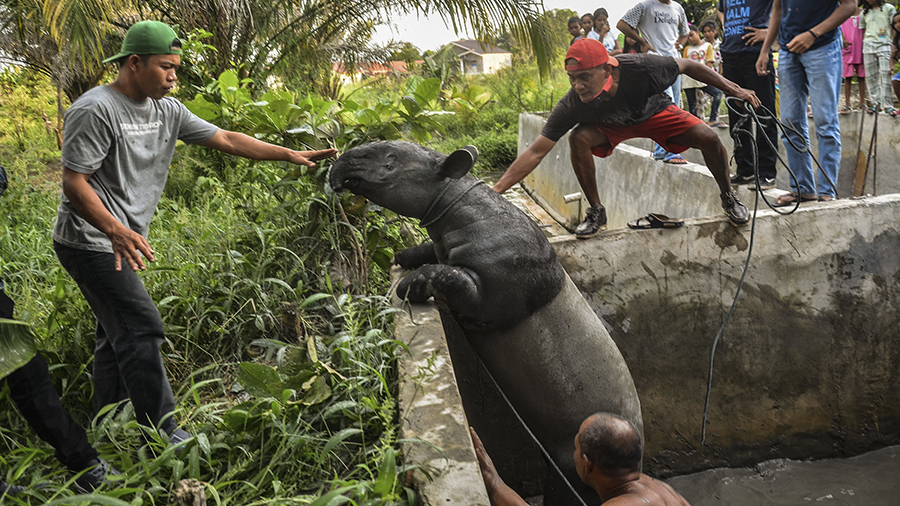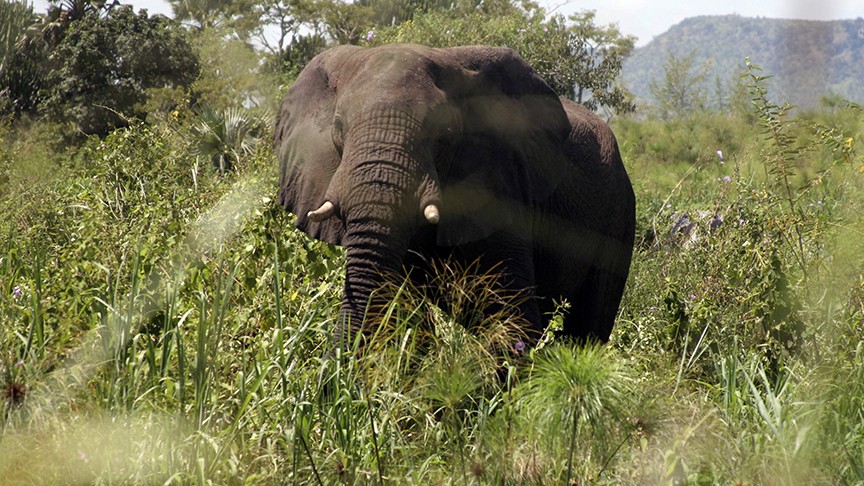War, civil unrest and military exercises pose significant risks to more than 200 endangered species around the world, including the eastern gorilla, the International Union for Conservation of Nature (IUCN) has warned.
A report produced by the IUCN, the world's largest environmental network, says human violence can have a devastating impact in the environment, directly killing wildlife and destroying entire ecosystems.
According to the conservationists, the damage to natural resources by armed conflicts generates a negative cycle that leads to even more violence.
"Degradation of nature increases the likelihood of conflict, while wars devastate not only lives, but also the natural environment," IUCN director general Bruno Oberle said in a statement.

A silverback mountain gorilla, a subspecies of the eastern gorilla, in the forest of the Bwindi Impenetrable National Park in southwestern Uganda. /AP
A silverback mountain gorilla, a subspecies of the eastern gorilla, in the forest of the Bwindi Impenetrable National Park in southwestern Uganda. /AP
History backs up the conservationists' findings. During the Rwandan Civil War of 1994, 90 percent of the large mammals in the Akagera National Park were killed for food or trade.
The report also found that two decades of war in Vietnam between 1955 and 1975 "almost certainly accelerated the slide into extinction" of the Javan rhinoceros.

Wildlife agency rangers rescue a Malayan tapir, an endangered species on the IUCN Red List, after it fell into a villager's fish pond. /Wahyudi/AFP
Wildlife agency rangers rescue a Malayan tapir, an endangered species on the IUCN Red List, after it fell into a villager's fish pond. /Wahyudi/AFP
The report also shows that most armed conflicts unfold in some of the world's more biodiverse regions, while areas around conservation sites and nature reserves, where resources are carefully managed, tend to be more peaceful.
"These findings suggest that conservation, restoration and sustainable management of natural resources can help reduce the pressures that drive conflict by improving the condition and productivity of the landscape," said IUCN chief economist Juha Siikamaki.

An elephant grazes at the Opekoloe Island in the White Nile river, southern Sudan. /AP/Alfred de Montesquiou
An elephant grazes at the Opekoloe Island in the White Nile river, southern Sudan. /AP/Alfred de Montesquiou
The IUCN keeps track of biodiversity loss on Earth in its Red List, first established in 1964.
The Red List of Threatened Species, which now includes assessment of more than 134,400 species, records the overall extinction trends on the planet, and is used by governments and international bodies to guide their policies on conservation.
According to the IUCN, more than 37,400 species are threatened with extinction, which accounts for 28 percent of all species identified on our planet.
On the Red List, 41 percent of amphibians are at risk of disappearing from Earth, followed by 36 percent of sharks and rays, 26 percent of mammals and 14 percent of birds.
The IUCN calls for governments and international bodies to establish "sanctions against those who commit environmental war crimes."
Source(s): AFP

